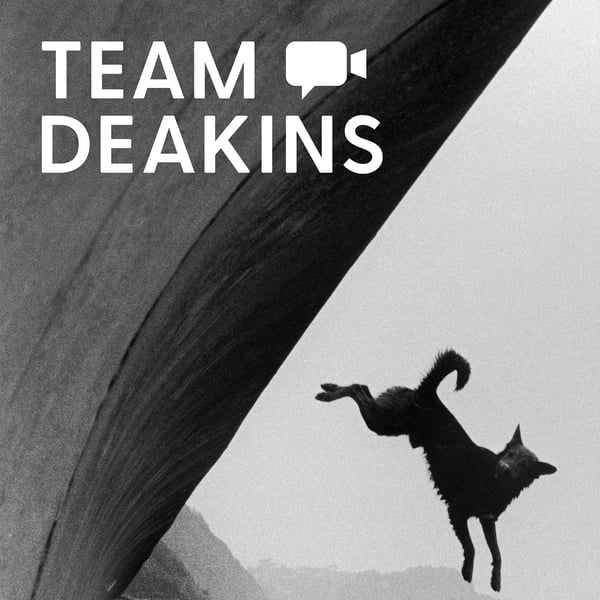CAMERA MOVEMENT - with Tom Cross & Ed Lachman
Team Deakins
James Ellis Deakins
4.8 • 1.4K Ratings
🗓️ 30 April 2025
⏱️ 93 minutes
🧾️ Download transcript
Summary
SEASON 2 - EPISODE 139 - Camera Movement - with Tom Cross & Ed Lachman
In this special episode of the Team Deakins Podcast, editor Tom Cross (Season 1, Episodes 129 & 139) and cinematographer Ed Lachman (Season 1, Episode 77 & Season 2, Episode 132) return to join us in a discussion about camera movement. From Douglas Sirk’s sweeping camera moves to Robert Bresson’s measured stillness, the four of us bring up examples of when camera movement (or its lack thereof) affects us, and we discuss why we believe choosing when and how to move the camera all comes down to what feels emotionally right for the story. When our conversation inevitably turns to 1917, we reflect on the variety of camera moves within the “single shot” of the film, and we discuss how the contrast of a camera move that diverges from a film’s established language can more appropriately express character and a beat within the story. Ed also shares the unique method of filming practiced by studio era director George Stevens, and Tom reveals how he and director Damien Chazelle (Season 2, Episode 23) restitched the roaming camera move of the opening musical number in LA LA LAND. Throughout the episode, we draw on our own experiences as filmmakers and from our observations on a myriad of films across film history, and the conversation evolves to cover the relationship between editing and cinematography.
A big thank you to Ed and Tom for coming back to talk with us!
-
This episode is sponsored by Aputure & Profoto
Transcript
Click on a timestamp to play from that location
| 0:00.0 | Hi and welcome to season two of the Team Deacons podcast, a collection of |
| 0:08.8 | informal conversations between Roger and James Deacons and a guest. |
| 0:13.7 | We never know where the conversation will take us, so listen in and see where it goes. |
| 0:21.2 | This episode is sponsored by Aperture, a premier manufacturer of LED lighting with the industry's |
| 0:28.6 | greatest variety of fixtures for your complete lighting needs. |
| 0:33.7 | Aperture recently announced the new storm family of lights. |
| 0:37.9 | With LED white light quality that matches natural daylight and classic tungsten bulbs, |
| 0:43.6 | plus extreme low-end dimming while maintaining color quality. |
| 0:48.2 | Discover more about the new storm lights and the complete Aperture lighting ecosystem at Apertor.com. |
| 0:58.8 | This episode is sponsored by Prophoto. |
| 1:02.5 | Prophoto, the light shaping company, renowned for its high-end lighting equipment used by the |
| 1:08.1 | world's best photographers and brands, has now expanded into the world of |
| 1:13.0 | cinematography with uncompromising speed of use and limitless creativity. The L-1600D is a high |
| 1:21.7 | output with no ballast LED light. Its dual mount makes it compatible with 50 plus pro photo modifiers and hundreds of |
| 1:31.5 | Bowen's mount modifiers, making it a breakthrough product for cinematographers and gaffers |
| 1:37.9 | seeking speed and efficiency on set with the highest degree of creative light-shaping possibilities. |
| 1:46.6 | Today, we're examining the topic of camera movement in films. |
| 1:51.2 | To join us in this discussion, our editor Tom Cross and cinematographer Ed Lachman. |
| 1:57.5 | Thank you guys for doing this. |
| 1:59.3 | This is going to be fun. |
| 2:00.8 | Yeah. Thanks so much. Yeah. Thank you. |
| 2:03.6 | We should probably start and just talk about how camera movement can add to a scene. |
... |
Please login to see the full transcript.
Disclaimer: The podcast and artwork embedded on this page are from James Ellis Deakins, and are the property of its owner and not affiliated with or endorsed by Tapesearch.
Generated transcripts are the property of James Ellis Deakins and are distributed freely under the Fair Use doctrine. Transcripts generated by Tapesearch are not guaranteed to be accurate.
Copyright © Tapesearch 2025.

